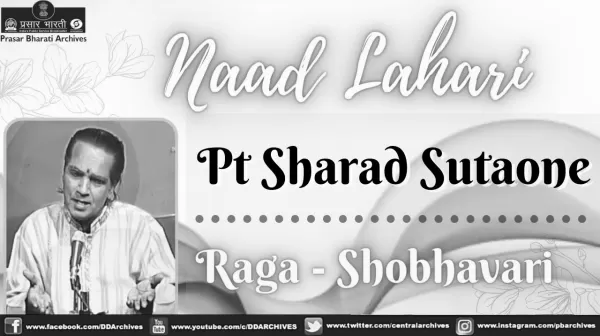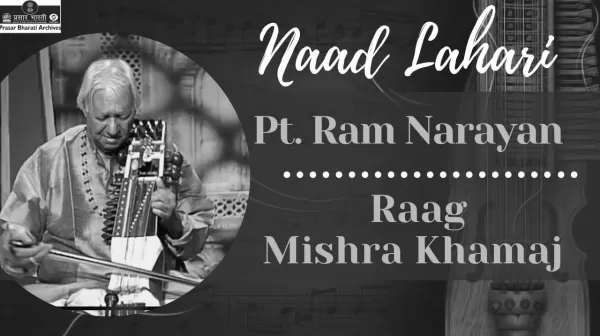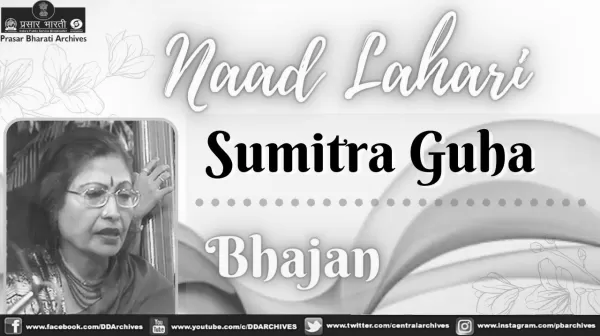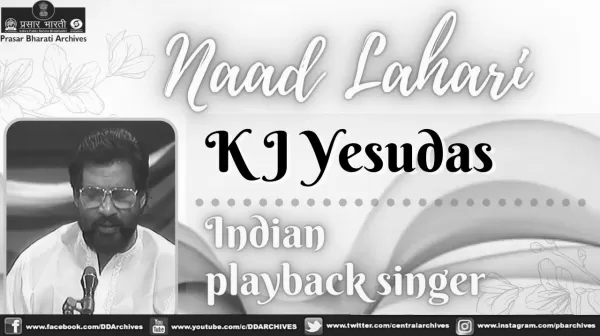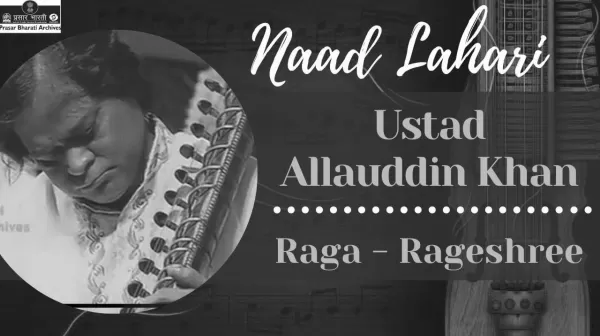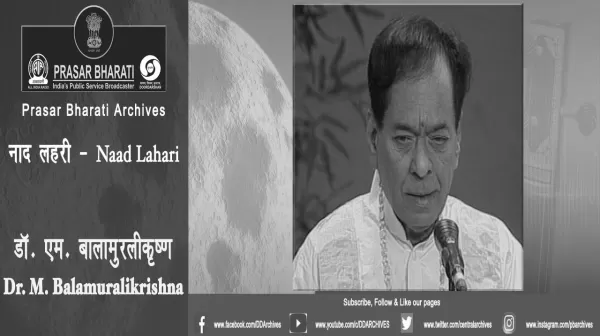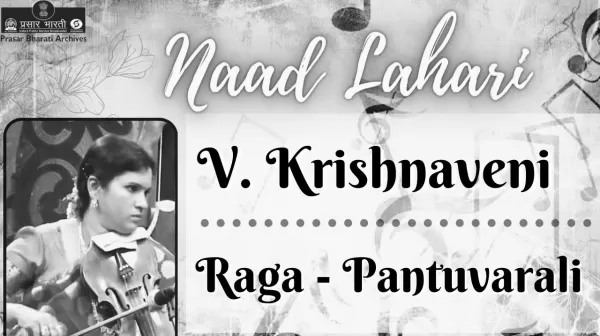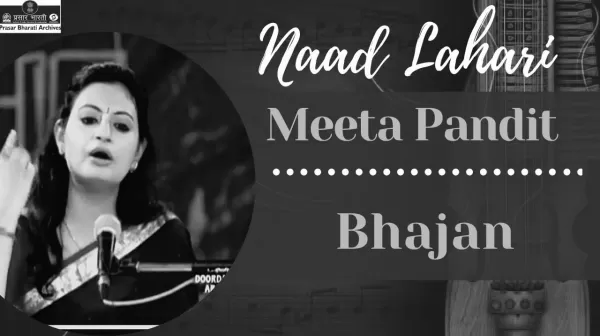Ustad Asad Ali Khan | Rudraveena
Asad Ali Khan was an Indian musician who played the plucked string instrument rudra veena. Khan performed in the style dhrupad and was described as the best living rudra veena player in India by The Hindu. He was awarded the Indian civilian honor Padma Bhushan in 2008. Khan was born 1937 in Alwar in the seventh generation of rudra veena players in his family. Khan was one of a few active musicians who played the rudra veena and the last surviving master of one of the four schools of dhrupad, the Khandar school. Khan received several national awards, including the Sangeet Natak Akademi Award in 1977 and the civilian honor Padma Bhushan in 2008, which was awarded by Indian President Pratibha Patil. He was described as the best living rudra veena player in India by The Hindu and lived in Delhi Details of the video: ARDG DVC 60 5070
Playlist
Category
- Dhrupad
Dhrupad is a genre in Hindustani classical music from the Indian subcontinent. It is the oldest known style of major vocal styles associated with Hindustani classical music, Haveli Sangeet of Pushtimarg Sampraday and also related to the South Indian Carnatic tradition. It is a term of Sanskrit origin, derived from dhruva (ध्रुव, immovable, permanent) and pada (पद, verse). The roots of Dhrupad are ancient. It is discussed in the Hindu Sanskrit text Natyashastra (~200 BCE – 200 CE),[3][4] and other ancient and medieval Sanskrit texts, such as chapter 33 of Book 10 in the Bhagavata Purana (~800–1000 CE), where the theories of music and devotional songs for Krishna are summarized
Musical instrument
Rudra Veena
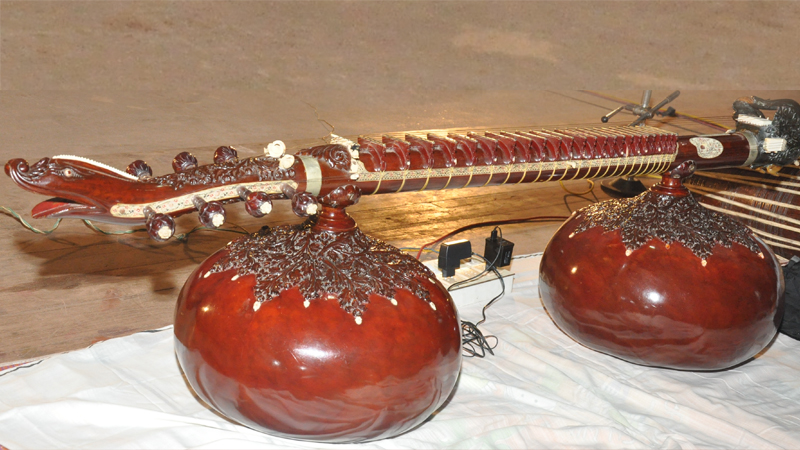
The Rudra veena (also spelled Rudraveena or Rudra vina)—also called Bīn in North India—is a large plucked string instrument used in Hindustani classical music, especially dhrupad. It is one of the major types of veena played in Indian classical music, notable for its deep bass resonance.
The rudra veena is mentioned in court records as early as the reign of Zain-ul Abidin (1418-1470), and attained particular importance among Mughal court musicians. Before Independence, rudra veena players, as dhrupad practicioners, were supported by the princely states; after Independence and the political integration of India, this traditional patronage system ended. With the end of this traditional support, dhrupad's popularity in India declined, as did the popularity of the rudra veena. However, in recent years, the rudra veena has seen a resurgance in popularity, driven at least partly by interest among non-Indian practicioners
The name "rudra veena" comes from Rudra, a name for the Hindu god Shiva; rudra vina means "the veena of Shiva"[3] (compare Saraswati veena). According to oral tradition, Shiva created the rudra vina, with the two tumba resonator gourds representing the breasts of either his wife Parvati or the goddess of arts and learning Saraswati, and the long dandi tube as the merudanda, both the human spine and the cosmic axis.[3] The length of the fretted area of the dandi is traditionally given as nine fists—the distance from the navel to the top of the skull. [3]
Another explaination is that the asura Ravana is said to have invented the rudra veena; inspired as he was with his devotion to Lord Shiva, or Rudra, he named the instrument Rudra veena.
The North Indian vernacular name "bīn" (sometimes written "bīṇ") is derrived from the preexisting root "veena," the term generally used today to refer to a number of South Asian stringed instruments.[3] While the origins of "veena" are obscure, one possible derrivation is from a pre-Aryan root meaning "bamboo" (possibly Dravidian, as in the Tamil veṟam, "cane," or South Indian bamboo flute, the venu), a reference to early stick or tube zithers[3]—as seen in the modern bīn, whose central dandi tube is still sometimes made from bamboo.[8]
General Description
The rudra veena is classified either as a stick zither[9] or tube zither[10] in the Sachs-Hornbostel classification system. It has a long tubular body made of wood or bamboo with a length between 54 and 62 inches. Two large, round resonators, made of dried and hollowed gourds, are attached under the tube. Twenty-four brass-fitted raised wooden frets are fixed on the tube with the help of wax. There are 4 main strings and 3 chikari strings.
History
It is an ancient instrument rarely played today. The rudra veena declined in popularity in part due to the introduction in the early 19th century of the surbahar, which allowed sitarists to more easily present the alap sections of slow dhrupad-style ragas. In the 20th century, Zia Mohiuddin Dagar modified and redesigned the rudra veena to use bigger gourds, a thicker tube (dandi), thicker steel playing strings (0.45-0.47 mm) and closed javari that. This produced a soft and deep sound when plucked without the use of any plectrum (mizrab). The instrument was further modified as the shruti veena by Lalmani Misra to establish Bharat's Shadja Gram and obtain the 22 shrutis.[11]
रुद्र वीणा एक प्राचीन वाद्य यंत्र है। इसमें सागौन की लकड़ी या बाँस से बना एक लंबा नलीदार ढाँचा होता है, जिसके दोनों किनारों पर लगभग चौदह इंच के दो खोखले अनुनादक/तुंबे लगे होते हैं। यह तुंबे सूखे या खोखले कद्दू से बने होते हैं। इसमें अंगुलिपटल (दाँडी) पर पीतल की चौबीस सारिकाएँ (मंद्र, मद्ध्य, और तर: तीनों सप्तकों में) लगाई गई होती हैं, जिन्हें मोम की मदद से अचल बनाया जाता है। इन सारिकाओं के ऊपर पीतल की पतली नुकीली प्लेट्स लगाई जाती हैं, जिन्हें सार कहा जाता है। इसमें 4 मुख्य तार और 3 चिकारी/ताल (दो दाईं ओर और एक बाईं ओर) तार होते हैं। ये सभी तार 3 कीलों, जिन्हें ककुभा कहा जाता है, की मदद से नली के एक कोने पर बांधे जाते हैं, जिसमें तारों को समायोजित करने के लिए दोनों तरफ 8 नियामक होते हैं। चार मुख्य तार मुख्य घुड़च से गुजरते हैं और अपने संबंधित खूँटियों में बंधने से पहले, वे मेरु कहे जाने वाले एक ऊपरी घुड़च से होकर गुजरते हैं। चिकारी तार अपनी-अपन खूँटियों पर लगने के लिए दो पार्श्व घुड़च पर लगे होते हैं, एक-एक दोनों तरफ। इसमें लगभग साढ़े तीन फ़ीट की लंबाई वाला एक अंगुलिपटल (दाँडी) होता है जो सभी सारिकाओं और तारों को एक साथ रखता है। यह दाहिने हाथ की तर्जनी और मध्यमा अंगुली में पहने जाने वाले मिजराव से बजाया जाता है। पार्श्व तारों को छोटी उंगली पर पहने गए मिजराव से बजाया जाता है। ड्रोन तारों के बाएँ पार्श्व को छोटी उंगली पर पहने गए मिजराव से बजाया जाता है। रुद्र वीणा को बजाने का पारंपरिक आसन वज्रासन या दरबारी बैठक हुआ करता था (जिसमें वीणा को तिरछे रखा जाता था, जहाँ ऊपरी तुंबा बाएँ कंधे पर टिका होता है, जबकि निचला तुंबा दाहिनी जांघ पर रखा जाता है और अंगुलिपटल (दाँडी) छाती के पास रखा जाता है)। बाद में, वादकों ने इसे बजाने के लिए एक नई मुद्रा का आविष्कार किया, जिसे सुखासन के रूप में जाना जाता है (इसमें वीणा को आधा तिरछा रखा जाता है, ऊपरी तुंबे को दाहिनी जांघ पर रखा जाता है, जबकि निचले तुंबे को फर्श पर रखा जाता है और अंगुलिपटल (दाँडी) को छाती से दूर रखा जाता है। पारंपरिक मुद्रा में रुद्र वीणा बजाते समय जिन कठिनाइयों का सामना करना पड़ता था, इस नई मुद्रा से उन परेशानियों में कमी आई। माना जाता है कि वीणा शब्द का उद्गम वण शब्द से हुआ है, और यह ऋग्वेद में वर्णित एक तार वाद्य यंत्र है। वैदिक पुजारी कात्यायन ने अथर्व वेद में सौ तारों से युक्त एक वाद्य यंत्र के बारे में बताने के लिए भी वण का प्रयोग किया। वण का अर्थ ध्वनि (शब्द) और गति उत्पन्न करना है। इसलिए, वण को वह तार वाद्य यंत्र माना जाता था जिसने वीणा को जन्म दिया। यह माना जाता है कि रुद्र वीणा भगवान शिव द्वारा देवी पार्वती की सुंदरता के लिए एक श्रद्धांजलि के रूप में बनाई गई थी। माना जाता है कि इस वाद्य यंत्र को भगवान शिव ने सबसे पहले बजाया था, और यह भी माना जाता है कि इसमें आध्यात्मिक शक्तियाँ होती हैं। यह माना जाता था कि रुद्र वीणा महिलाओं के नाजुक कंधों के लिए बहुत भारी हुआ करता था। लिहाजा, महिलाओं को इसे बजाने की अनुमति नहीं थी। हालांकि, आधुनिक युग कुछ महिला वादक भी हैं। रुद्र वीणा अब लगभग विलुप्ति के कगार पर पहुँच चुका एक दुर्लभ वाद्य यंत्र बन गया है। इसको बनाने वाले शिल्पकार और साथ ही इसके वादक, दोनों ही, अब बहुत कम पाए जाते हैं। इस वाद्य यंत्र ने उन्नीसवीं सदी के शुरुआती दिनों में सुरबहार, सितार और सरोद, आदि जैसे अन्य तार वाद्य यंत्रों के विकास के साथ ही अपना महत्व खो दिया। यह लकड़ी से बना एक लंबा नलीदार ढाँचा। इसमें दो बड़े आकार के गोल अनुनादक होते हैं, जो केंद्र से एक समान दूरी पर, नली के नीचे लगे होते हैं और उत्तम गुणवत्ता वाले कद्दू से बने होते हैं। इसमें चार बजने वाले तार लगे होते हैं, जिनमें से एक इस्पात और तीन तांबे के तार होते हैं जो निचले छोर पर हुक से बंधे, और नली के समानांतर खिंचे होते हैं और अलंकृत समस्वरण खूँटी तक ले जाए जाते हैं। नली के दोनों तरफ घुड़चों पर दो ड्रोन तार होते हैं जो अपनी-अपनी खूँटियों तक खिंचे होते और उससे बंधे होते हैं। चौबीस पीतल युक्त उभरे हुए लकड़ी की सारिकाएँ होती हैं जिन्हें मोम की मदद से नली पर लगाया गया होता है। इसमें लगे अनुनादक बड़े पैमाने पर लकड़ी के फूलों की नक्काशी से सजाए गए होते हैं। इसमें खूँटी धानी पर भी नक्काशी हुई होती है। नली का निचला सिरा एक पक्षी की उकेरा जाता है और हाथी के दांत से बने चौड़े समतल घुड़च के लिए आधार के रूप में कार्य करता है। बजाते समय, एक तुंबा बाएं कंधे पर और दूसरा तुंबा दाहिनी जांघ पर टिका होता है। इसे दाहिने हाथ की उंगलियों पर पहने जाने वाले तार से बने मिजराव के द्वारा बजाया जाता है। यह उत्तरी भारतीय शास्त्रीय संगीत में उपयोग होने वाला वाद्य यंत्र है।”
वर्गीकरण
- Log in to post comments
- 556 views
- 55 views

